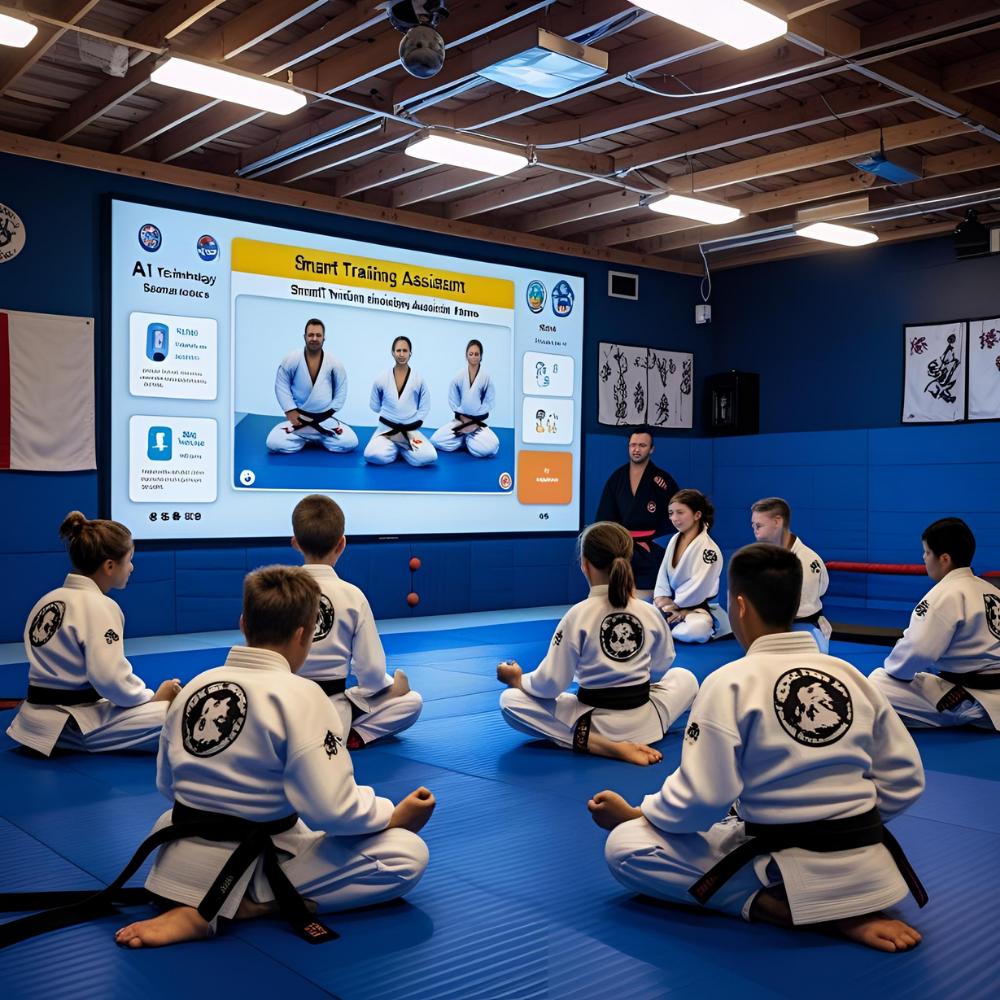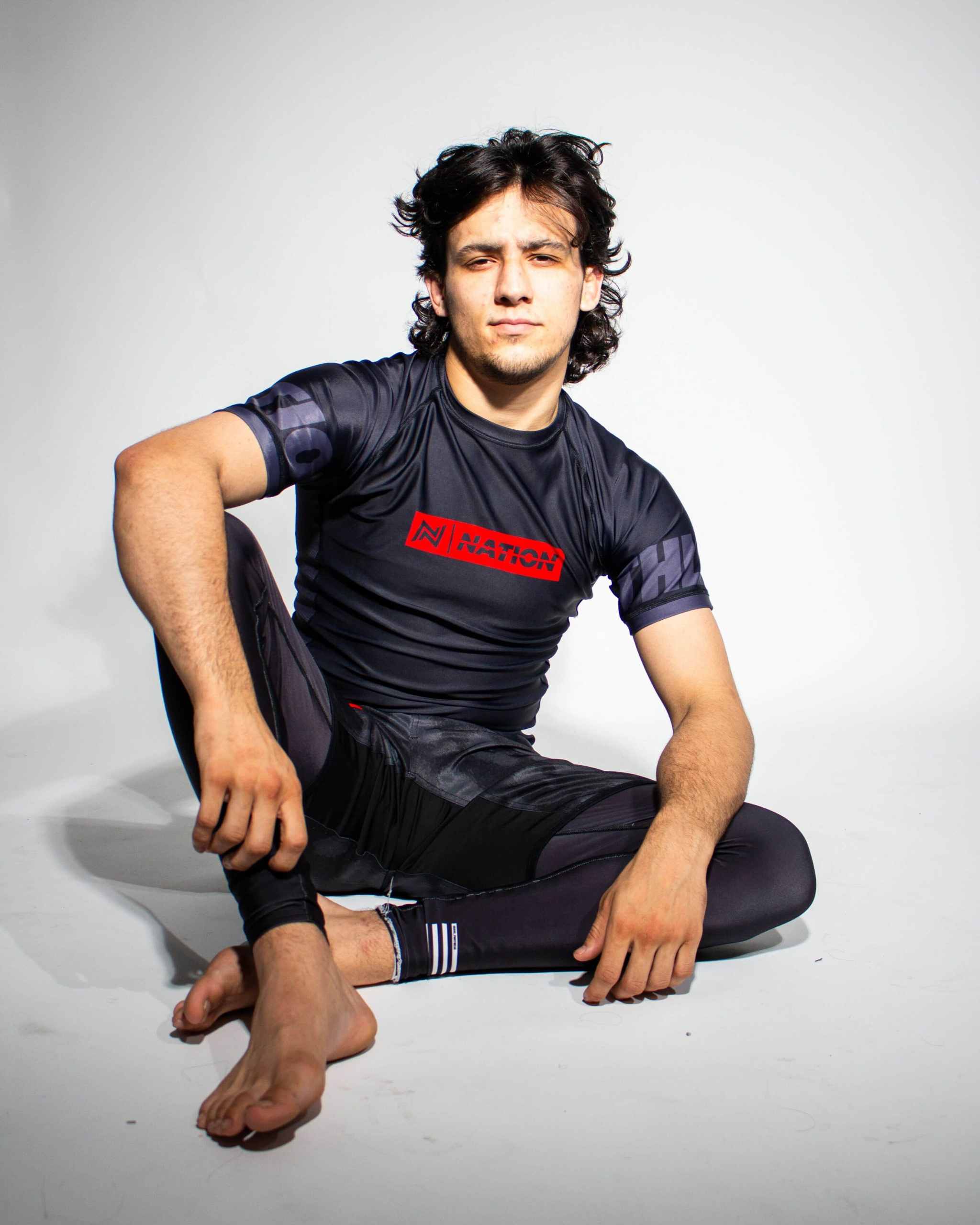Can AI and VR Actually Help Your BJJ Training?
Technology is creeping into every corner of life — including the mats. While BJJ is still, at its core, a hands-on, sweat-and-reps kind of practice, new tools powered by Artificial Intelligence (AI) and Virtual Reality (VR) are starting to show up in training rooms and competition prep.
But is that a good thing?
Let’s dig into what AI and VR could really mean for Jiu-Jitsu — both the upsides, and the potential downsides.
The Case For Using AI in BJJ
1. AI as a Game Planner
AI shines when there’s data involved. Imagine feeding it competition footage and getting strategic suggestions like:
- “Your opponent has 80% of finishes from the back — avoid turtle at all costs.”
- “She passes guard mostly to her left — favor reverse De La Riva on your right side.”
In other words, AI could become your personal strategist, identifying patterns, tendencies, and giving you clean options — no guesswork.
2. AI Video Analysis Could Redefine How We Learn
Right now, video feedback in BJJ mostly means filming rolls and maybe spotting a few mistakes. AI could go way deeper. We’re talking about software that identifies when you’re fatiguing, where your movement efficiency drops, or even suggests adjustments based on your biomechanics if combined with wearable sensors.
Pair that with biometric data (like heart rate or joint stress), and it’s possible you’ll get a smarter feedback loop than a human coach can provide — especially at scale.
3. Democratizing Access to High-Level Coaching
Not everyone has access to elite coaches or world-class gyms. AI could change that.
Picture a blue belt in a remote town getting breakdowns, positional analysis, and a full development plan from an app — instead of pirated instructionals or rolling with the same two training partners forever.
The next Jozef Chen might come from a garage in the Midwest instead of a mega-academy in California. No more bowing to grainy black-and-white posters of Helio. (Kidding... kind of.)
The Case Against (Or at Least, the Limitations)
1. This Is Still a Physical Art
AI might help you plan and analyze, but it can’t feel for you.
The nuance of Jiu-Jitsu — pressure, timing, weight distribution, reaction — that comes from hundreds of rolls with different bodies, skill levels, and styles. You can’t simulate that fully in a headset or on a dashboard. At least, not yet.
Training with a live, resisting partner is still irreplaceable.
2. It Might Create a Bigger Gap Between “Haves” and “Have-Nots”
The promise is that AI levels the playing field. But let’s be real — these tools cost money.
The risk is that elite gyms with money and sponsors lean into AI-enhanced coaching, while smaller schools and average practitioners are left behind. Just like strength & conditioning once separated hobbyists from pros, tech could become the next layer of separation.
3. Helio Probably Wouldn’t Approve
Let’s be honest, the old-school mindset still dominates a big part of BJJ culture. Drilling with a robot? Learning game plans from an app? Not exactly “honoring the roots.”
Then again, those roots didn’t include smartphones, whoop straps, or digital tournaments either — and we got over that.
Final Thought: Tools vs. Training
So, will AI and VR replace BJJ coaches? No.
Can they help you train smarter, recover better, and plan more efficiently? Absolutely — if you use them right.
These tools are only as good as the human behind them. But for athletes serious about optimizing their game (or those who don’t have access to elite coaching), AI might become a legit part of the training stack — not a gimmick.
Just don’t forget to actually get on the mat.
Want more insights on the intersection of BJJ and tech? Tag us on Instagram @nationathletic and share your thoughts.
🛒 Ready to Elevate Your Game?
Train smart, look sharp. Check out our performance rash guards built for modern Jiu-Jitsu athletes.
Shop Rash Guards


